The Ultimate Self-Drive Guide Around Some Of WA’s Wildflower Hotspots
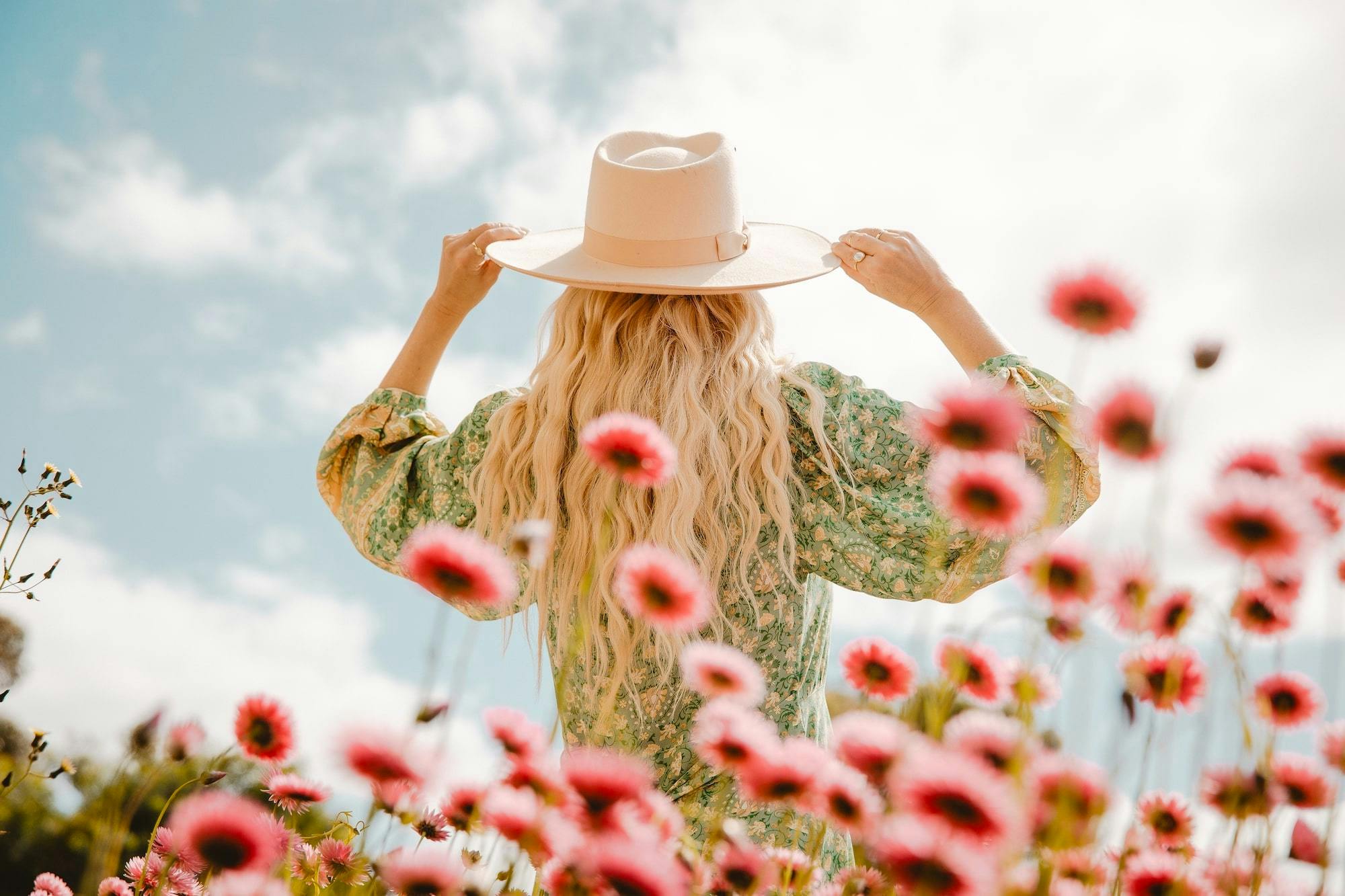
Western Australia is home to one of the largest wildflower collections on Earth, with over 60 percent of the 12,000+ found here unique to the area, and now’s the perfect time to get out there and see them! This epic seven-day, self-drive road trip will get you exploring some of WA’s many hotspots, including Australia’s Coral Coast to the northwest, Australia’s Golden Outback to the southeast and finally back closer to Destination Perth.
So pack the car, fill the tank and hit the road:
Day 1: Perth – Pinnacles – Dongara – Mingenew – Kalbarri (571km, 6.5hrs)
Sunrise at the Pinnacles (2hr trip)
Rise early to hit the road and catch sunrise at the Pinnacles. You’ll see the hundreds of limestone structures that formed 25,000-30,000 years ago to create the Pinnacles Desert at Nambung National Park. The eerie, mars-like location is the home of many native animals and birdlife, and sunrise is the best time to visit for the incredible shadows and morning light.
Dongara & Wildflower Tour with New Leaf Connect (2hr trip)
Arrive in the coastal twin-town of Dongara-Port Denison for a half day wildflower tour with New Leaf Connect, who offer personalised custom and full day tours of the Coalseam and northern (Canna, Mullewa and Pindar) or southern surrounds (Mingenew, Three Springs and Morawa).
Depot Hill
Located a zippy five minutes from Mingenew, Depot Hill is an orchid hotspot abundant in life and history. If you’re partial to a walk, take the bush track to discover the Army Rifle Range which was used as an army training area during World War II.
Coalseam Conservation Park
This park is famous for the effervescent carpets of yellow, cream and pink pom-pom everlastings that cover the red soil, rocky outcrops and rugged cliff terrain. The park is also home to a collection of walking trails and lookouts, dotted with information detailing the native flora and fauna.
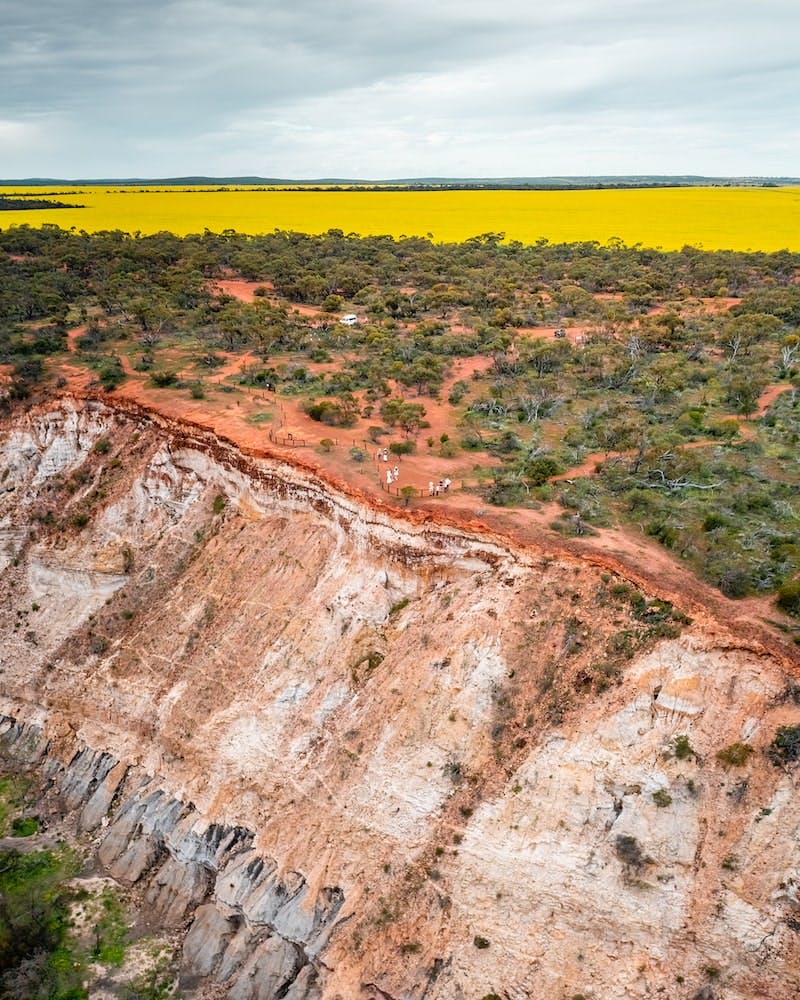
Stay: Kalbarri Edge Resort (2.5hr trip)
A day of exploration calls for a night of rest and recuperation. Located in the heart of town, a stone’s throw from the ocean and pub, the Kalbarri Edge Resort is the perfect place to wind down and relax.
Day 2: Kalbarri
Home to the exquisite Kalbarri National Park and dramatic Coastal Cliffs, the laidback coastal town of Kalbarri is a great place to visit for a little wildflower eye candy.
Birgurda Trail
This moderately easy, 8km walk atop the multi-coloured layers of sandstone and limestone hugs the Indian Ocean, and features steep chasms, rocky inlets and mesmerising rock formations, along with wildflowers bloom and if you’re lucky, some migrating whales.
Kalbarri National Park & Wildflower Tour with D’Guy Charters
After lunch at Gorges Cafe, jump on a wildflower tour in Kalbarri National Park with D’Guy Charters – as funny as they are filled with local knowledge, D’Guy also offer Stargazing Tours on the Kalbarri Skywalk.
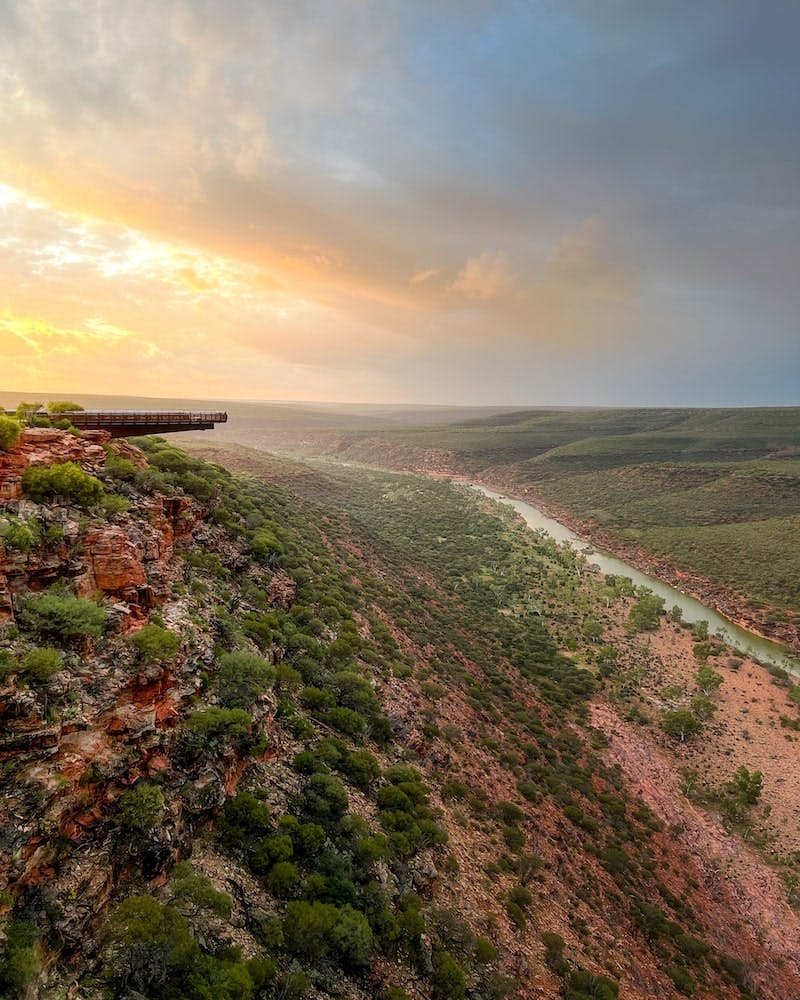
Traversing an impressive 186,000 hectares, the Kalbarri National Park resides at the lower reaches of the Murchison River, where a myriad unique wildflowers bloom among the National Park’s gorges and coastal cliffs, including Nature’s Window Z-Bend Gorge.
All roads within the park are sealed and suitable for 2WD vehicles. Western access to the park is from the town of Kalbarri, via Ajana-Kalbarri Road and eastern access is off the North West Coastal Highway, via Ajana-Kalbarri Road.
Day 3: Kalbarri – Mullewa – Mellenbye Station (340km, 3hrs, 50 mins)
Mid-West Wildflower Country
WA’s Wildflower Country is the collective name given to inland farming towns located a few hours north of Perth including Carnamah, Coorow, Dalwallinu, Mullewa, Moora, Morawa, Mingenew, Perenjori and Three Springs. Not only do these small towns boast incredible displays of wildflowers, there’s also a lot of history and heritage woven into their roots.
Mullewa (2.5hr trip)
About 100 kilometres east of Geraldton, Mullewa is known for its mesmerising carpets of everlastings and as one of the few places in the world where the wreath flower (Wreath Leschenaultia) grows.
Mellenbye Station (1.5hr trip)
After lunch at the lovely Mullewa Wildflower Cafe head to Mellenbye Station for some fresh air, wide open spaces, wildflowers and starry night skies. Keep your eyes peeled for the wreath flowers dotted around the station entrance and within the paddocks. They aren’t easily found, so a hot tip is to check in with the station owner, Shelley, before you set off on your hunt as she may be able to provide the inside scoop on where to look or she might even provide a tour.
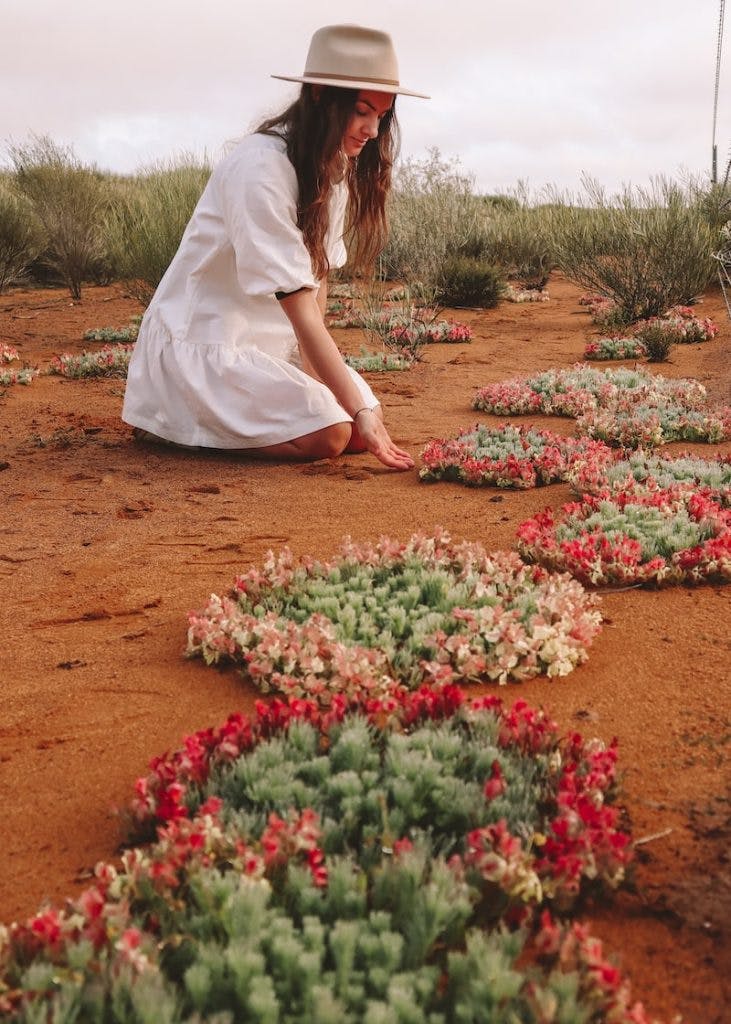
Wollanoo Rock
Mellenbye Station-goers also have the opportunity to embark on a free guided tour to Wollanoo Rock, based on the availability of staff. At the spectacular granite outcrop fondly known as “The Rock,” you’ll spot everlastings, donkey orchids, Mellenbye bottlebrush and station cattle.
Monster Truck experience – Mellenbye
Make sure you opt for the thrilling experience on the resident, station-owned Monster Truck out to the stunning Burra Lake for an outstanding sunset! You’ll be buzzing with adrenaline while you’re taking in the spectacular outback views and wondrous wildflowers.
Day 4: Mellenbye Station – Perenjori – Dalwallinu (206km, 2hr 35min)
There are camp kitchens available to cook up a storm, so you can enjoy a feast in the intricately decorated shearing shed. Then jump in the car and head towards Perenjori for some more wildflower exploration.
Perenjori (1hr 15min trip)
Situated 350km from Perth and 39km south east of Morawa with a population of 617 people, “Perenjori” comes from the Aboriginal word “Perangary,” meaning water hole and it’s also part of the Wildflower Way Tourist Drive that runs from Dalwallinu to Geraldton.
Bird lovers should keep their eyes and ears peeled as the farming town is famous for its impressive collection of native birds, including parrots, cockatoos, waterbirds, honeyeaters, thornbills, babblers and fairy-wrens.
John Forrest Lookout
Venture through pastoral and mining country to the John Forrest Lookout which forms part of the Perenjori-Rothsay Heritage Trail. The trail is a 180km round trip which encapsulates the Perenjori Museum, Rothsay townsite, rabbit-proof fence road to Camel Soak and Monger’s Lake Lookout (an Aboriginal heritage site, which tradition says was formed by the Bimurra creator being).
Witness the dreamy fields of gold, pink and white everlastings as far as the eye can see at John Forrest Lookout. You might even see the Centaurea cyanus, commonly known as the cornflower or bachelor’s button. Make sure you tackle the 750m high lookout here for some great views of the surrounding farmland and station country.
Camel Soak
Journey to Camel Soak, the man-made waterhole nestled within a granite outcrop also known as “The Rock Hole”. Kangaroos and emus are regular visitors of the beautiful pools along with an abundance of birdlife, so don’t forget your binoculars! The rock formations are also home to an array of orchids, which can be found at the base of the rock, which doubles as a great picnic spot.
Dalwallinu (1hr 20min trip)
The first Europeans explored the area in 1907, the first settlers arrived two years later and the first crops were planted in 1910. The town is known for their magnificent Wattle trees and world-famous tourist route, Wildflower Way.
Petrudor Rocks (30min trip)
Petrudor Rocks is an enormous granite outcrop with water holes at the base. It’s a wonderful place to stop for a picnic or drink as you watch the sun go down, and a great place to see wildflowers and native fauna in season. You’ll find pink and white everlastings, wattles, native grevilleas, kunzea pulchella (native bottlebrush), donkey orchids, spider orchids, blue fairy orchids and leek orchids scattered all around.
Dinner: Dalwallinu Hotel
Thursday night is parmi night, and with eight different types begging to be devoured, it would be rude not to! The pub also features a wildflower room which is aptly decorated with flora, where guests can dine and enjoy the colours of the season while indulging in a hearty feed.
Stay: The Old Convent, Dalwallinu
The story of The Old Convent began in 1923, when one of the pioneering families of the district built the structure as a private residence. Since then, the building operated as a unisex Catholic day school, all girls boarding facility and Catholic Church before it was renovated and refurbished to become tourist accommodation.
Day 5: Dalwallinu – Wongan Hills – Toodyay (173km, 1hr 55 mins)
Enjoy the complimentary continental brekkie at The Old Convent, before packing up and heading to Wongan Hills.
Wongan Hills (50min trip)
Wongan Hills is home to the largest area of natural vegetation remaining in the northern wheatbelt. It’s also a place of diverse flora, boasting more than 250 species of flowering plants. The name comes from the Aboriginal word meaning “whispering hills”.
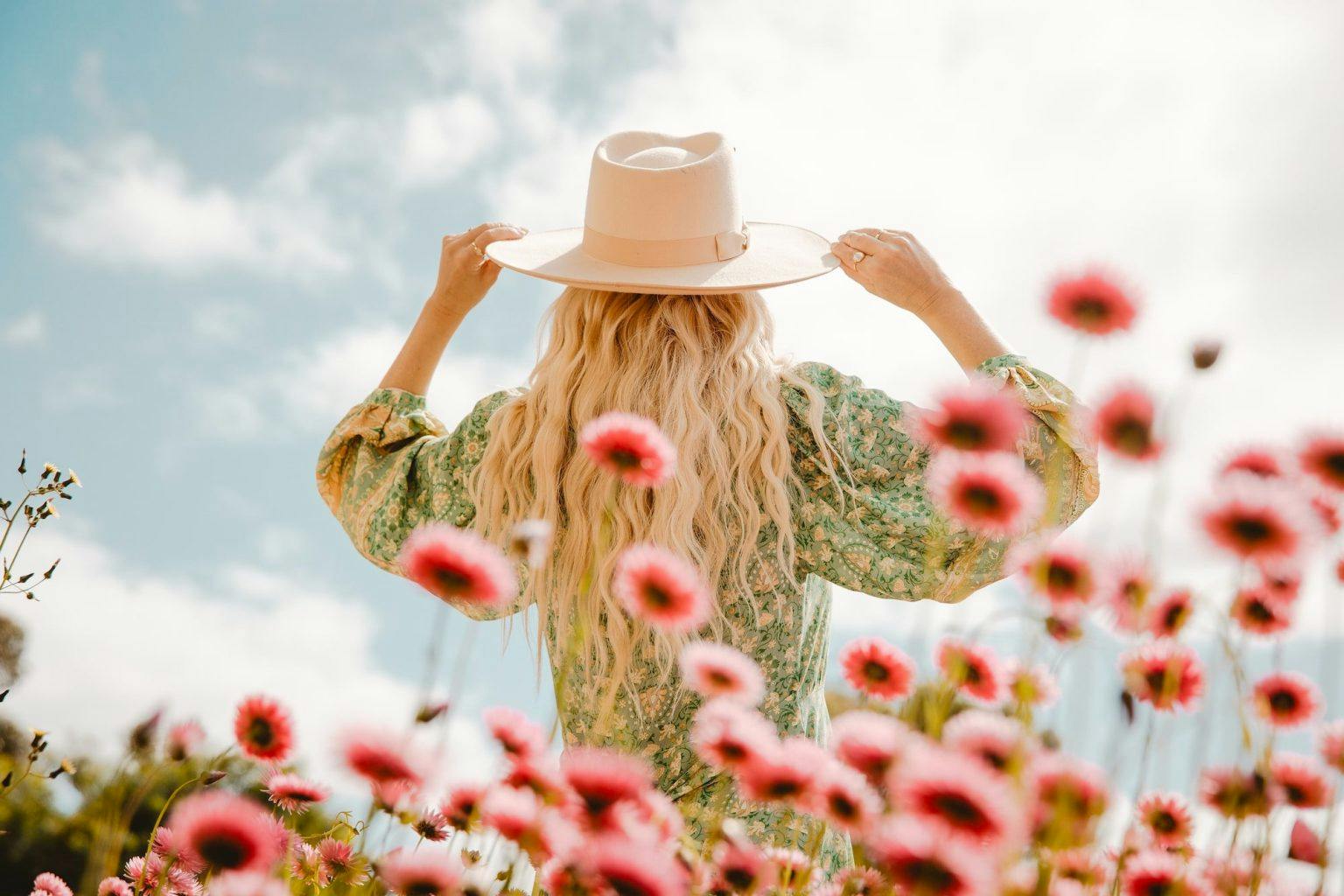
Wildflower Tour with Rod Clark
Tee up a trip with local wildflower enthusiast Rod Clark, who is always happy to take fellow wildflower fanatics into the bush for a free wildflower tour through an area the locals fondly call “paradise”. You’ll spot spider, donkey and cowslip orchards, as well as the lemon-scented sun orchard and blue fairy orchard. Get in touch with Rod through the local Visitor Centre.
Toodyay (1hr)
The picturesque Avon Valley town is one of the oldest inland settlements in WA, with charming displays of 19th century history and architecture reminiscent of its colonial and convict past. The Shire is unique as it’s within the three Noongar Boodja boundaries of the Ballardong, Yued and Whadjuk people. Toodyay is also a hidden treasure for those with a taste for history, as it oozes stories of bushrangers, convicts and war heroes. Pink everlastings, blue leschenaultia and a variety of orchids can all be found during the wildflower season at popular locations including Pelham Reserve, Dawn Atwell Reserve, Wongamine Reserve and Majestic Heights.
Wongamine Reserve
A quick lunch at Toodyay Bakery and then it’s off to reconnect with nature at Wongamine Reserve, which spans 330 hectares and features a collection of medium difficulty tracks, including a 6.5km perimeter walk and three smaller trails. Salmon Gums are among the reserve’s varied vegetation, coupled with the Mottlecah which has the largest Eucalypt flower in the world, an array of orchid species and of course the bright yellow Acacia Acuminata, Toodyay’s unofficial emblem. Park along Bejoording or Forest Road which is a designated flora road set aside to highlight the diversity of the flora in the area.
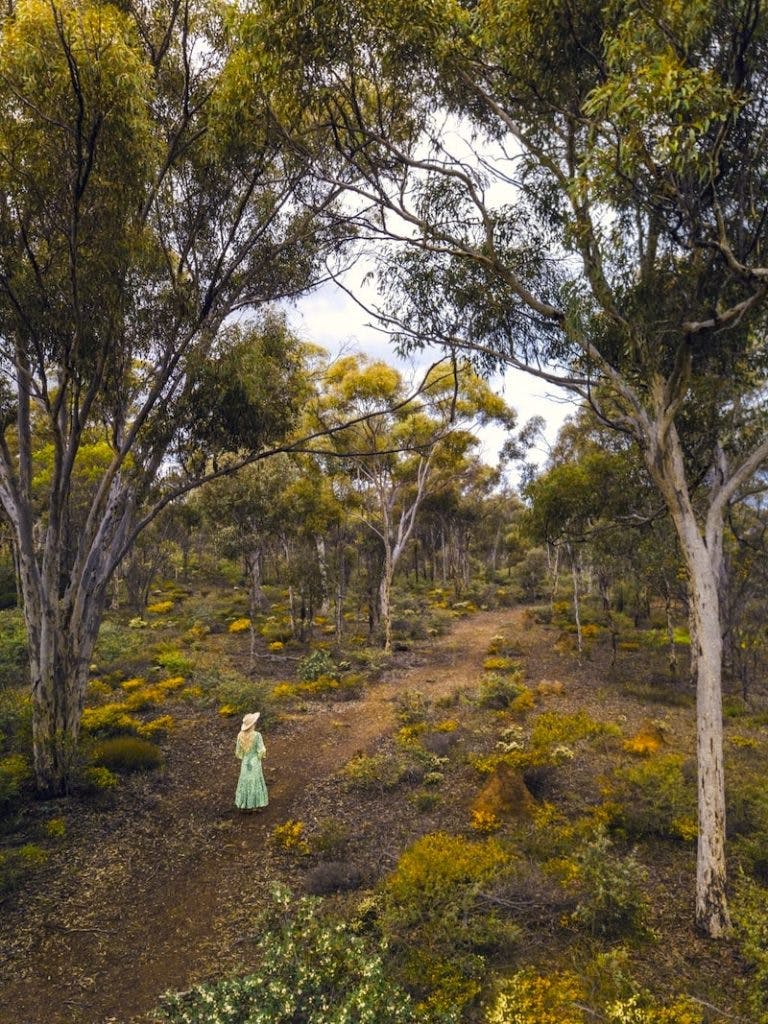
Wine Tasting: Coorinja Winery
Only five minutes from the town centre, nestled in the undulating Toodyay hills, Coorinja Winery has over 100 years of tradition and expertise, having been handed down through five generations of Wood family winemakers. The historic Ringa Bridge is also located on the property – a gorgeous spot for a picnic.
Stay & Dinner: The Victoria Hotel
The Victoria Hotel was established in the heart of Toodyay in 1888. It has undergone recent refurbishments with the addition of modern units boasting views of the Avon River, and the on-site restaurant is also a great place for a bite.
Day 6: Toodyay – Northam – York (63km, 52mins)
Northam (22mins)
Northam is a destination known for a diverse collection of tourist and heritage attractions including hot air ballooning, wildflowers and horse racing. Visit the Avon River which flows through the town and is home to ample bird life, including the white swan.
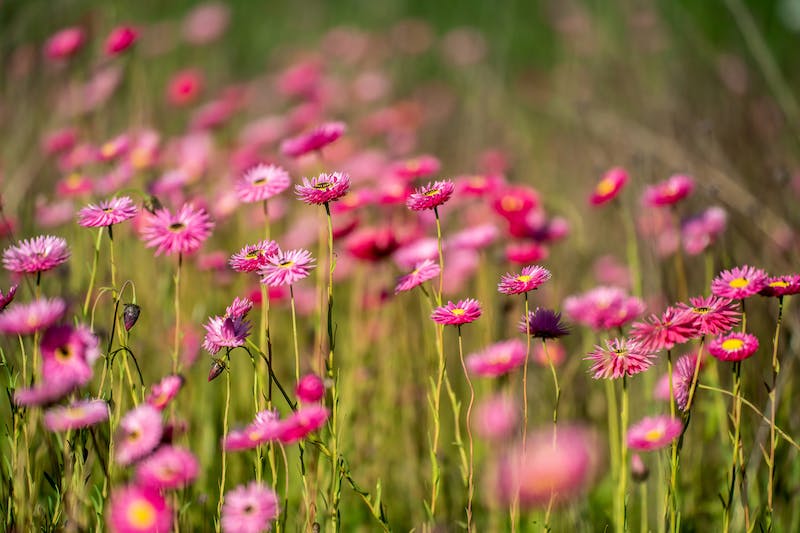
Bilya Koort Boodja Centre for Nyoongar Culture & Environmental Knowledge
Treat yourself to breakfast at The Farmers Hotel before a visit to Bilya Koort Boodja Centre, which offers an interactive educational experience that highlights and celebrates the rich Aboriginal history and presence in the Nyoongar Ballardong region.
York (30min)
York is considered a Heritage Precinct, and was initially established to grow cereal crops to feed the Swan River Settlement in 1829. York is also WA’s oldest inland town, home to natural beauty, several Heritage Walking Trails and a charming country experience infused with adventure, wildflowers, good food, wine and a budding arts scene.
York Bushland Gardens
Established in 2004 for the enjoyment of the community and to showcase Western Australia’s waterwise flora, the York Bushland Gardens is the habitat of many rare and native flora, with a large emphasis on wheatbelt and southwest species.
Subscribe to our free newsletter!
Mount Brown Lookout
Pack a picnic and watch the sun go down with spectacular 360-degree panoramic views of York and its surrounds at the Mount Brown Lookout. Located within five minutes of town and 342 metres above sea level, the lookout is accessible by foot or vehicle.
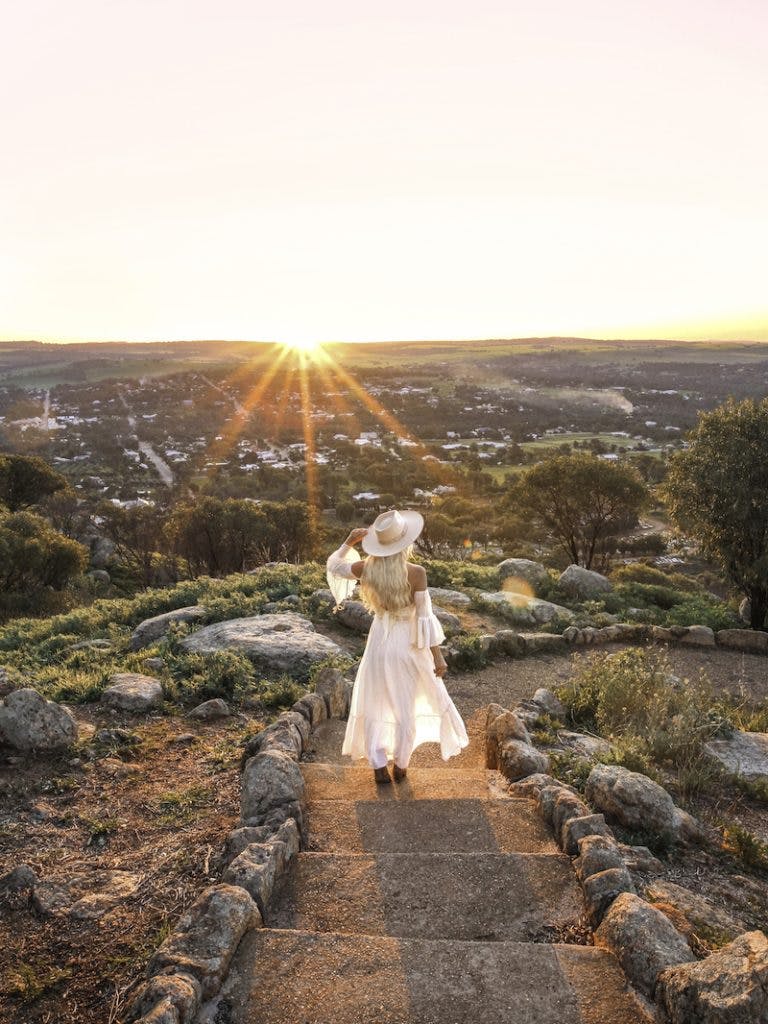
Dinner: The Imperial Homestead
Enjoy dinner at the Imperial Homestead, which was built in 1886 during the Gold Rush. Choose from the fusion of pub classics and modern Australian cuisine on the seasonal menu.
Stay: Laurelville Manor
Spend the evening at Laurelville Manor to end the trip with a teeny taste of luxury. The Edwardian two storey homestead was initially built in 1896 and features wide bullnosed verandas, elegant turrets and nine beautifully furnished rooms, surrounded by a garden of over 500 rose bushes.
Day 7: York – Perth (98km, 1.5hrs)
Breakfast: Laurelville Manor
Enjoy a complimentary and individualised breakfast of fresh and poached fruits, gourmet muesli, yogurt, juices and fresh eggs and breads served by Laurelville hosts, Phil and Sandra. From there it’s only one-and-a-half hours back to Perth!
Tips for Visiting & Photographing the Wildflowers
- Remember to follow the ‘Leave No Trace’ principles when visiting the wildflowers.
- It’s illegal to pick the wildflowers, and fines apply. Look, but don’t touch!
- Stick to the paths to avoid trampling the wildflowers. Some are pretty tiny, so watch your toes!
- Stick to public property. Though it may be tempting to enter private fields, it’s trespassing. It’s important for tourists to stick to public areas to avoid causing damage. Canola-field-fanatics, we’re looking at you.
- Make use of the local Visitors Centres by calling ahead or dropping in. They are a wealth of knowledge and will be able to give you all the up-to-date information.
- Plan in advance as accommodation can be limited during the busy wildflower period.
- Leave it to the experts and join a wildflower tour to take the leg work out of planning your trip.
Header Image: Alexandra Casey